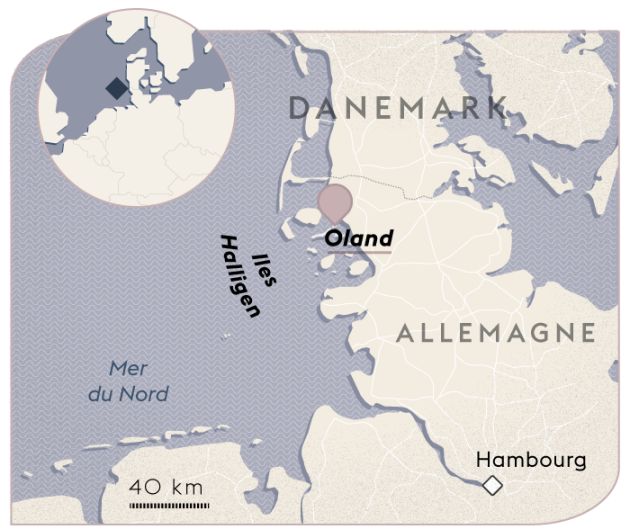Ten islets of land in the open Wadden Sea, an area of sandy mudflats in the North Sea. Floating dreams arising with the tides. Located in the Germanic part of North Friesland, the Halligen (Hallig in the singular) are also nicknamed the “watercolor islands”, thus evoking how sea and land are diluted there. These are two great storms which, in 1362 and 1634, gradually separated the Halligen from the continent. But they are not islands in the geological sense of the term. Without protective dykes, made up of piles of sediment carried by the tides, they lack a rocky core to claim the title.
In autumn and winter, the “watercolor islands” take on water. Due to storms, the level of the Wadden Sea sometimes rises dangerously, and this is the land under (“flooding”), which can happen up to thirty times a year. The salt marshes are then flooded. In extreme cases, only the houses, placed on hills, are sheltered from this sudden rise in water.
On the Hallig of Oland, which is a little over 2 kilometers long, the bell of the small church was built next to the religious building, for fear that the whole, too heavy, would sink the only Warft (“artificial hill”) on which about fifteen houses are built. Little dollhouses topped with thatched roofs. Even the old lighthouse, which marks the entrance to Oland, has one. Here, few fences, cows and sheep will graze together. On the small path that circles the islet, the cries of birds resound from everywhere, the Halligen being a stage on the migratory route of many volatile species, such as the brant geese.
Along a thin railway track that connects the Hallig to the nearest German town, Dagebüll, black-headed gulls and redshanks land and fly away in a pretty ballet. The rails thus draw a winding path between land and sea, between salt marshes and mudflats. Several times a day, a crash of scrap metal breaks the ambient tranquility. On the horizon, a wagon backfiring like a big motorcycle appears. In this flat immensity, we see it coming from afar. As he approaches, the oystercatchers who nest on the stones piled up along the railway line cry out even louder. And take off at the very last second, just before the big trolley passes. Like a perfectly synchronized dance, repeated over and over again.
You have 70.05% of this article left to read. The following is for subscribers only.
